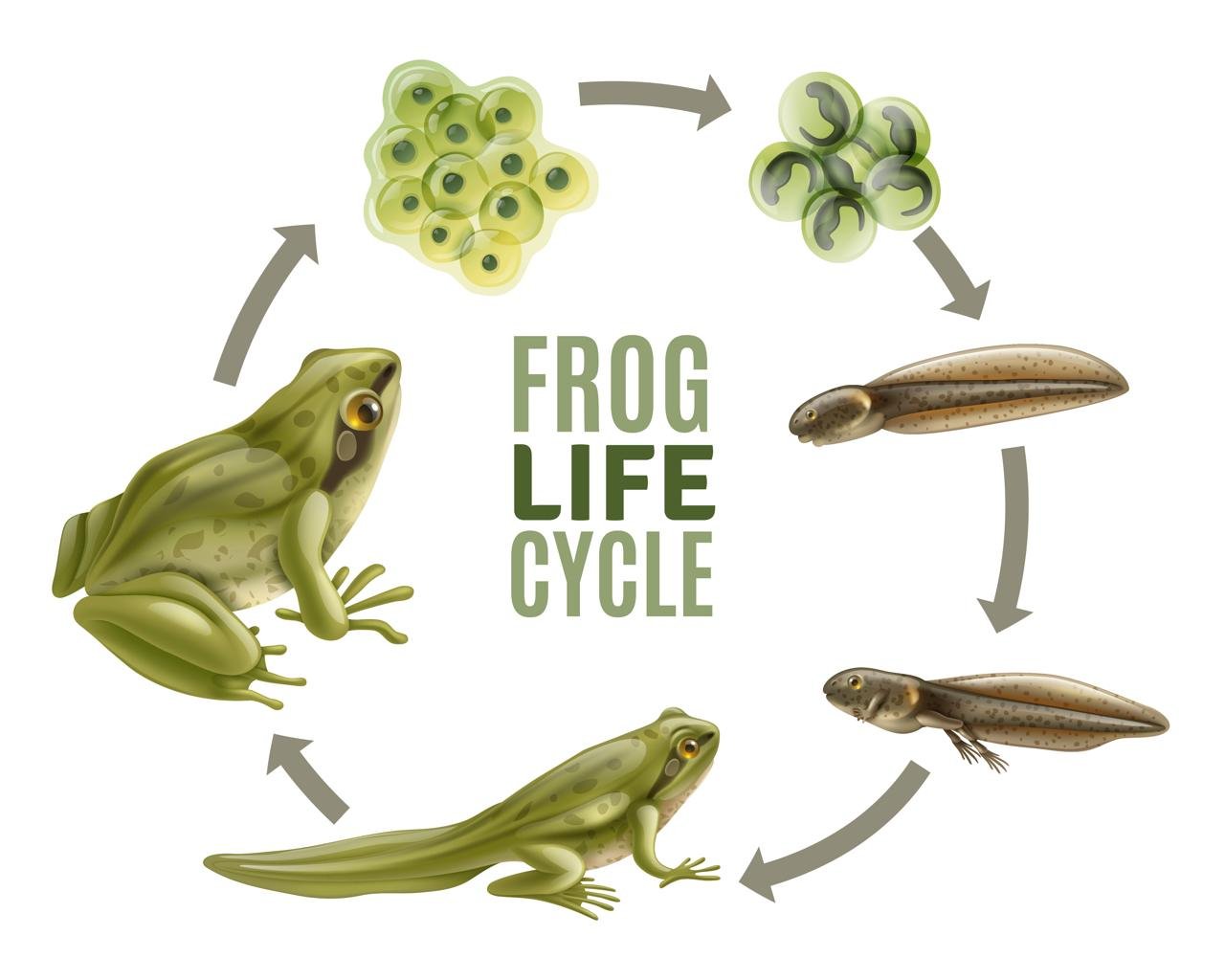Frogs are intriguing creatures with a complex life cycle that involves dramatic transformations. Understanding the stages of a frog’s life offers insight into their adaptability and ecological significance. Let’s explore the journey of a frog from a tiny egg to a fully grown adult.
Stage 1: Egg
The life cycle of a frog begins with the laying of eggs. Female frogs lay clusters of eggs, called spawn, in calm, freshwater bodies like ponds or marshes. The number of eggs laid can range from a few dozen to several thousand, depending on the species. These eggs are coated with a jelly-like substance, providing protection and moisture while they develop.
Within each egg, a tadpole embryo forms. The eggs typically hatch within one to three weeks, depending on environmental conditions such as temperature and humidity.
Stage 2: Tadpole
Once hatched, the young frog begins its life as a tadpole. Tadpoles are aquatic creatures with a long tail, gills for breathing underwater, and a diet primarily consisting of algae and plant matter. This stage is predominantly about growth and survival.
Tadpoles undergo significant transformations as they develop. They begin to grow hind legs, followed by front legs. During this metamorphosis, their gills are gradually replaced with lungs, preparing them for life outside the water.
Stage 3: Metamorphosis
Metamorphosis is the most remarkable stage of a frog’s life cycle. During this period, tadpoles undergo rapid physical changes. Their tails are absorbed into their bodies as they continue to develop legs. Their digestive systems are restructured to accommodate a carnivorous diet, consisting mostly of insects.
By the time metamorphosis is complete, the young frogs, often referred to as froglets, have fully developed lungs. This transformation can take several weeks to months, depending on the species and environmental conditions.
Stage 4: Adult Frog
Once metamorphosis is complete, frogs leave the water to begin life on land. This stage marks the transition to adulthood, where they develop the ability to reproduce. Adult frogs continue to grow and mature, typically reaching full size within one to two years.
Adult frogs are carnivorous and play essential roles in controlling insect populations. Their habitats can vary widely, from tropical rainforests to temperate woodlands and even arid deserts. Frogs have numerous adaptations that allow them to thrive in diverse environments, such as their sticky tongues for catching prey and their sensitive skin for absorbing moisture and breathing.
Ecological Importance
Frogs are crucial indicators of environmental health due to their permeable skin and dual life in water and on land. They are vulnerable to pollutants and habitat changes, making them excellent bioindicators. A decline in frog populations can signal broader ecological issues, emphasizing the importance of their conservation.
Summary
The life cycle of frogs is a testament to their incredible adaptability and resilience. From aquatic tadpoles to adult frogs with varied habitats, their transformation is one of nature’s extraordinary processes. By understanding their life cycle, we can appreciate their role in ecosystems and the need to protect these fascinating amphibians for future generations.
The life cycle of frogs showcases their remarkable journey from water to land and from egg to adult. These transformations highlight the adaptability and resilience that have enabled frogs to thrive for millions of years across diverse environments. Their journey through the life stages not only tells the story of individual growth but also echoes the evolutionary history that has shaped these fascinating amphibians into the creatures we observe today.
For more insights into how frogs have evolved over time and adapted to changing environments, be sure to read our article on the evolution of frogs. Exploring these interconnected themes deepens our understanding of the role frogs play in our ecosystems and the importance of preserving their habitats for future generations.

